Hello. I'm Oyabu, the director.
It feels like winter is on its way recently.
The other day, the weather suddenly turned cold, so I quickly made the most of the winter clothes that I had stored in the closet at home.
I'm thinking of bringing out a kotatsu table around next month.
Well, in this section, I'd like to talk about the work of a web director, focusing on how to proceed with the work, as well as my own experiences and what I think on a daily basis.
So, in this first post I would like to talk about the schedule, which will determine the future of the project.
Monosus' direction team often takes on the task of renewing B2B corporate websites, and they handle large-scale projects spanning over 1,000 pages, projects with detailed specifications such as CMS, and sometimes projects that involve a variety of members, including writers and photographers.
To tie together all these different parts, a clear schedule is required.
A schedule lists the project goal and who will be responsible for what tasks and by when to achieve that goal.
The schedule created in this way can be thought of as a blueprint of the entire project.
It is no exaggeration to say that the outcome of the project depends on how well this blueprint is constructed.
Now, I would like to explain how we actually create our schedule.
1. First, decide on a goal.
If the "project goal" is to launch the site, decide on a date for launch.
The release date is generally set according to the client's preference, but we may also decide on a date after reaching an agreement with the client, taking into account factors such as the production situation.

The basis of the schedule has been created.
Even at this stage, you can get a rough idea of how much time you can devote to the project.
I've made it this far and there's only a few days left to complete it... I often get a little impatient...
2. Identify tasks: who will do what.
Following the flow of the project, we create major categories such as wire creation, design creation, coding, CMS, etc., and divide tasks according to the person in charge.
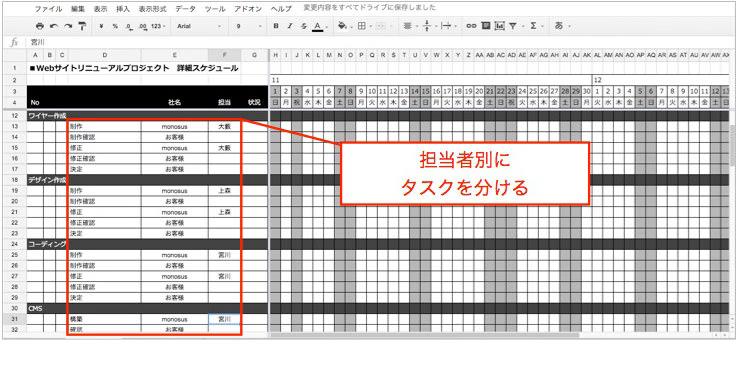
The basic flow for each deliverable is production, confirmation of production, revision, confirmation of revision, and decision, and then the person in charge of the task is decided. At this time, it is clarified what prerequisites are necessary for each task to start, and who needs to confirm it before it will be completed.
For example, it is often the case that we cannot begin production without receiving a manuscript from the client, so I always make sure to check whether there are any tasks for the client before production begins.
In addition, for processes that are likely to require frequent client confirmation, such as home page design, we also assume that confirmation and correction tasks will be carried out multiple times.
3. Plan labor hours well in advance.
This may sound like a slogan from a financial institution, but it's about schedules.
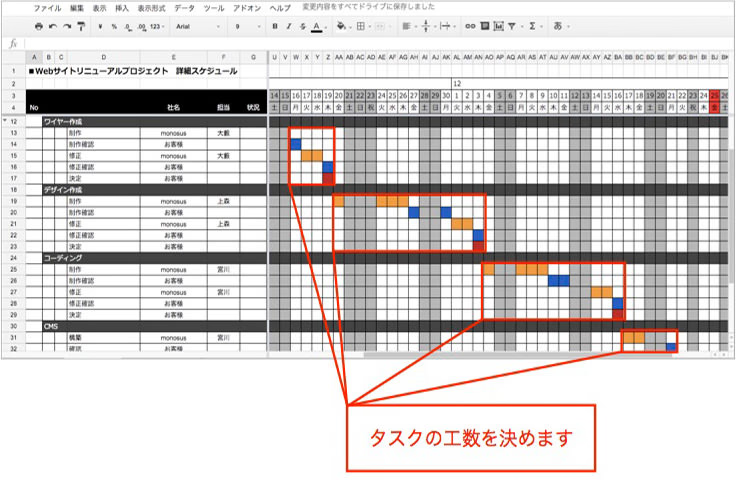
The number of man-hours will be determined for each task in each process.
Determine the amount of work required per day according to the dates on the horizontal axis and fill in the cells.
For projects with long production periods, if it is difficult to make plans for a month or so ahead, set a date for rescheduling in advance when the man-hours can be confirmed. However, you will need to consider whether the final period and man-hours will be appropriate, and if possible, shorten the task periods in the early stages to allow some leeway in the later stages of the schedule.
For a two- to three-month project, you'll need about a week of leeway, but for a six-month project, two weeks of leeway is essential.
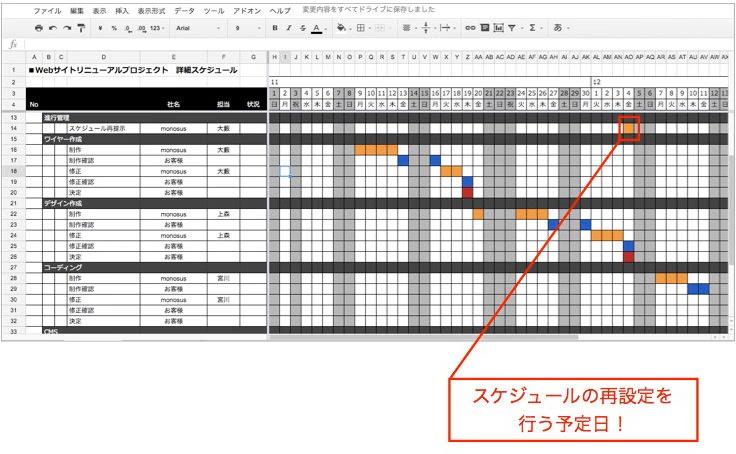
4. Milestones and meeting dates.
Schedule a time to meet with the client.
The basic rule is to schedule the meeting date to coincide with the date on which major decisions such as the basic UI and grand design are made, or in other words, milestones that mark turning points in the project.

For projects with long production periods, we may set up regular meetings once a week.
Also, during periods when the schedule is tight or when there are many decisions to be made, it is important to plan in advance what you will talk about and what decisions you need to make with the client, such as holding meetings twice a week.
5. Talk to your supervisor to come up with a more realistic schedule.
Based on the created schedule, each production staff member is assigned.
Check whether the person in charge can produce the work according to the schedule and adjust the task duration if necessary.
If necessary, the schedule for May rain treatment may be adjusted.
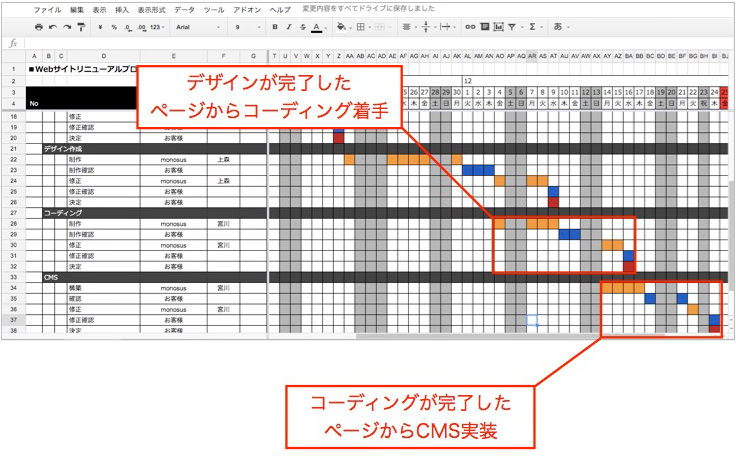
For example, let's say you have a plan to start coding for 10 pages after the design has been decided. If the coding period is tight and it is difficult to handle, we will adjust the schedule so that you can start coding in stages once the design for several pages out of the 10 pages has been decided.
However, when processing in a trickle, care must be taken to ensure that processes that can only be started after the completion of the previous process are not started after the previous process has been completed.
6. Finally, print and check!
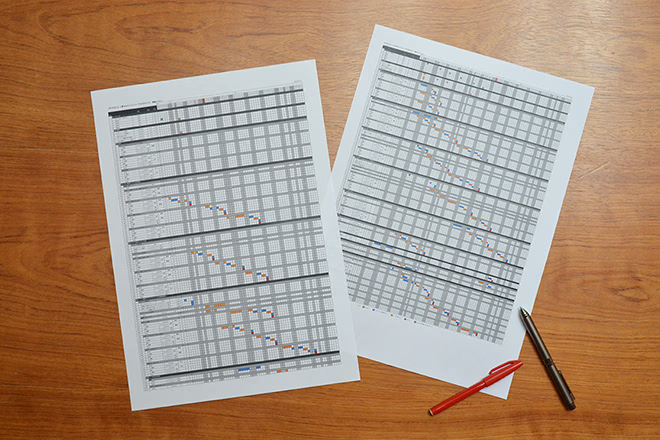
It's common to print out schedules you've created, such as for meetings.
Often when you print something, it doesn't look the way you expected it to.
We check that there are no missing characters in the cells and that the paper size is appropriate for the meeting.
It is also necessary to make adjustments so that the text is as easy to read as possible when printed, such as making sure there is no extra space or the text is not too small.
This is a rough outline of how the schedule is put together.
The schedule is an essential component in moving a project forward.
It is important to imagine what processes and tasks are involved from the start of the project to the finish, think carefully about the duration, and make a plan with plenty of time.
Also, since schedules are shared among multiple people involved in a project, it's important to make sure they are easy to read and understand for anyone.
In the future, we would like to go into more depth about the work of web directors, so we hope you will find this useful.

